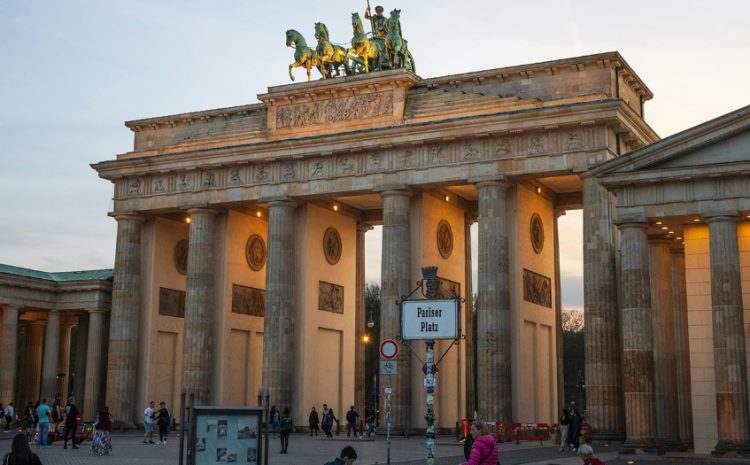
Unlocking the potential of Berlin’s real estate market requires a deep understanding of its dynamics and unique characteristics. As Germany’s capital and one of Europe’s most vibrant cities, Berlin offers a diverse range of opportunities for investors and homeowners alike. Despite nationwide trends of declining real estate prices, Berlin stands out as a resilient oasis, where property values remain relatively stable and rental demand continues to soar. In this article, we delve into eight key factors that shed light on Berlin’s real estate landscape, from its promising market outlook and regional disparities to its green urban spaces and multicultural demographic. Whether you’re a seasoned investor or a prospective homeowner, navigating Berlin’s real estate scene requires insight into its intricacies, and we’re here to guide you through it.
1. Berlin – A Promising Real Estate Market
Amidst the overall decline in real estate prices in Germany, Berlin appears promising. According to Guthmann analysts, prices here only decreased by 3.2% in 2023, with the average cost per square meter being €5320 in February 2024. Meanwhile, rental rates have increased by 11.9% over the year. Berlin’s rental costs are among the highest in the country, around €18 per square meter (50% higher for new buildings). Combined with the shortage of new offerings, investing in local real estate proves highly prospective. PwC analysts from the “Big Four” auditing firms agree, including Berlin in the top 5 European cities for real estate investment in 2024.
2. Comparing Eastern and Western Berlin
Despite the reunification, differences in the real estate market between Eastern and Western Berlin persist. Older buildings in Eastern Berlin are characterized by panel houses (Plattenbauten) with standardized apartments, which are less prevalent in the West. This is reflected in prices, with German constructions from the Soviet era significantly cheaper but still in demand and well-maintained. Interestingly, recent construction has predominantly occurred in Eastern Berlin, offering a wider selection at often lower prices. The most affordable apartments in Berlin are found in the Marzahn-Hellersdorf district, featuring large residential areas in the east of the capital.
3. Berlin – The Greenest City in Germany
Berlin stands out as Germany’s greenest city, with approximately one-third of its territory covered by forests, gardens, and parks. Notable locations include Tiergarten, Treptower Park, the Berlin Botanical Garden (one of Europe’s largest and oldest), Friedrichshain People’s Park, Körnerpark, Grunewald (the largest green area in the city at around 3,000 hectares), and the renowned residential complex, Siedlung Cecilienhof. The proximity to green spaces positively influences property demand and prices, as such properties are always sought-after and offer prospects for good returns.
4. 15% Property Ownership
Berlin’s population, approximately 3.57 million, includes only 15% property owners. Forecasts predict a population of 3.75 million by 2030, with steady growth indicating sustained rental demand. Additionally, with 22% of Berlin’s residents being foreigners from over 170 countries, there’s a diverse and potentially lucrative market for both rental and property sales.
5. Young and Multinational City
Berlin’s residents have an average age slightly above 42 years, with 56% aged under 45. The economically active segment, aged 25 to 65, constitutes 57%, indicating high potential internal demand for both rental and property purchases. Moreover, with 22% of the city’s population being foreigners from over 170 countries, including Turkey, Poland, and Ukraine, Berlin boasts a young and multicultural demographic.
6. Berlin is a Touristic Hub
In 2023, Berlin welcomed 12.1 million visitors, a nearly 16% increase from the previous year. There were 29.6 million overnight stays, an 11.5% rise, indicating positive tourism trends. With almost two-thirds of visitors coming from other German cities, investing in local real estate for short-term rentals appears lucrative, especially considering Berlin’s lack of pronounced seasonality.
7. Most Popular Tourist Districts in Berlin
- Mitte (city center)
- Friedrichshain
- Kreuzberg
- Charlottenburg
- Wilmersdorf
- Tempelhof
- Schöneberg
- Treptow
- Köpenick
These districts attract the most overnight stays from tourists, presenting investment opportunities.
8. Accessible Public Transport in Berlin
Berlin boasts one of Europe’s most developed transport systems, including buses, trams, ferries, regional trains, and an extensive subway network with 10 lines and 173 stations. This accessibility, particularly to distant areas, positively impacts property demand and prices, with both central and residential neighborhoods being sought-after. Despite its reputation as an affordable city, Berlin’s real estate market is not expected to significantly depreciate, considering the high demand and competitive rental rates.
Berlin’s real estate market presents a compelling opportunity for investors and homeowners seeking stability, growth, and diversity. With its resilient market performance, diverse housing options, abundant green spaces, and multicultural appeal, Berlin continues to attract interest from both domestic and international buyers. Whether you’re drawn to the historic charm of the eastern neighborhoods or the modern developments in the west, Berlin offers something for everyone. As the city evolves and adapts to changing dynamics, staying informed and attuned to market trends will be key to making informed decisions in this dynamic real estate landscape. So whether you’re considering investing in rental properties, purchasing a home, or simply exploring the market, Berlin stands ready to welcome you into its vibrant real estate ecosystem.


